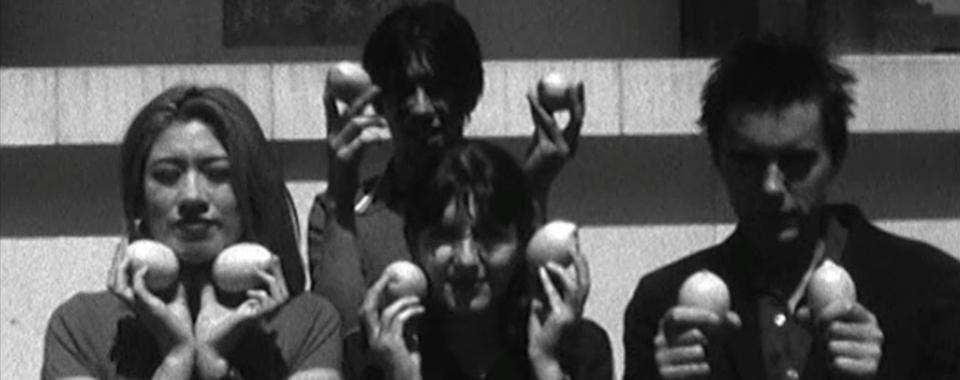LUMI x BFF: Lush: A Far From Home Movie Review
07 November 2024
LUMI Programmer Kate Nuttall reviews Lush: A Far From Home Movie at Belfast Film Festival.

Lush: A Far From Home Movie follows the eponymous shoegaze band on various tours across Europe, the US and Japan between 1992 and 1996, offhandedly captured by bassist Phil King. Clocking in at a tight 35 minutes, it’s a small snapshot of a band whose story came to a tragic end. Still, it offers an intimate glimpse into the height of their success, driving and wandering across city after city in crisp, black-and-white Super 8, set to the more haunting and subdued songs in Lush’s discography.
Belfast Film Festival’s screening was paired with an insightful Q&A with the band’s two former bassists, Phil King (also the filmmaker) and Steve Rippon, led by music journalist Stuart Bailie. King explained that the film was never intentional, and that the raw footage spent many years in a drawer, too painful to revisit after the death of the band’s drummer, Chris Acland, in 1996. King shot the footage on his own Super 8 camera, claiming it was nostalgic even for the early 90s, deliberately opting for slightly pretentious, artistic flair. It’s clear that the footage was shot with no real intention or plan, catching bits and pieces of busy city streets, swimming pools, long car journeys in the desert or close-ups of band members grinning into the lens. There is, however, a cruel dramatic irony threaded throughout, particularly the imagery during the sequence set to Love At First Sight- contorting monster masks, band members sitting alone with thousand-yard stares, a hall of mirrors, Christian crosses, church ruins- with the knowledge of Acland’s fate in the back of one’s mind. It’s a testament to the strength of the film’s editing that these images are revealingly crafted into a bigger picture, telling the tale of a band unaware that their fate had already been decided.
This film is certainly more beneficial and insightful to Lush fans, but the strength of its composition, both visually and audibly, warrants attention from anyone interested in the zeitgeist of shoegaze and the pre-Britpop years. Aside from its purpose as a time capsule, it is also a tribute to Chris Acland, and an attempt to visually capture the ethereal, sensory, and unsettled feelings of a band on the move, fittingly reflective of the dreamy, haunting atmosphere of Lush’s music.




